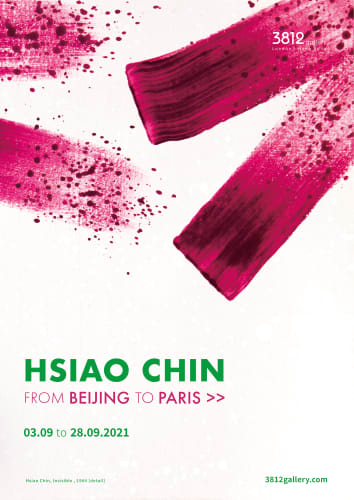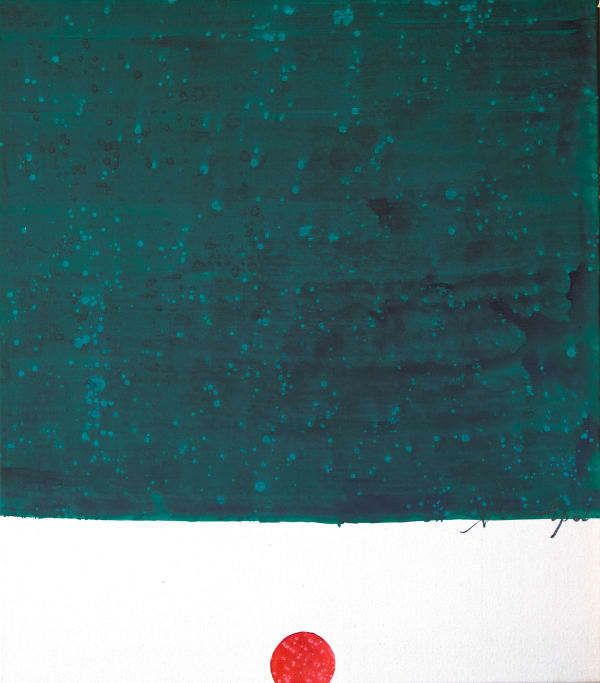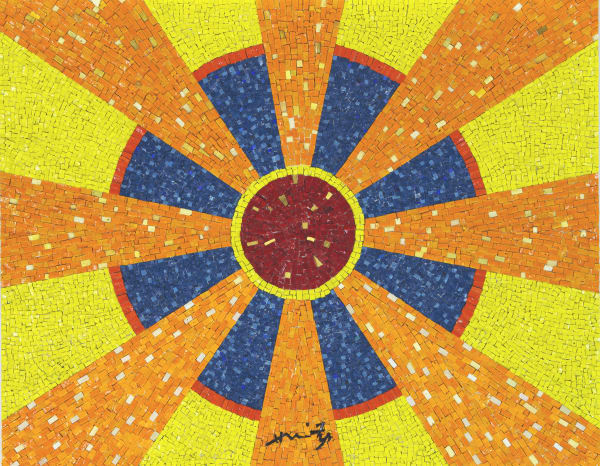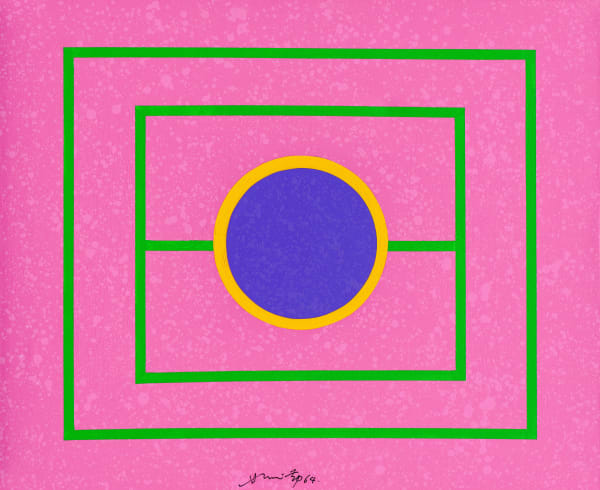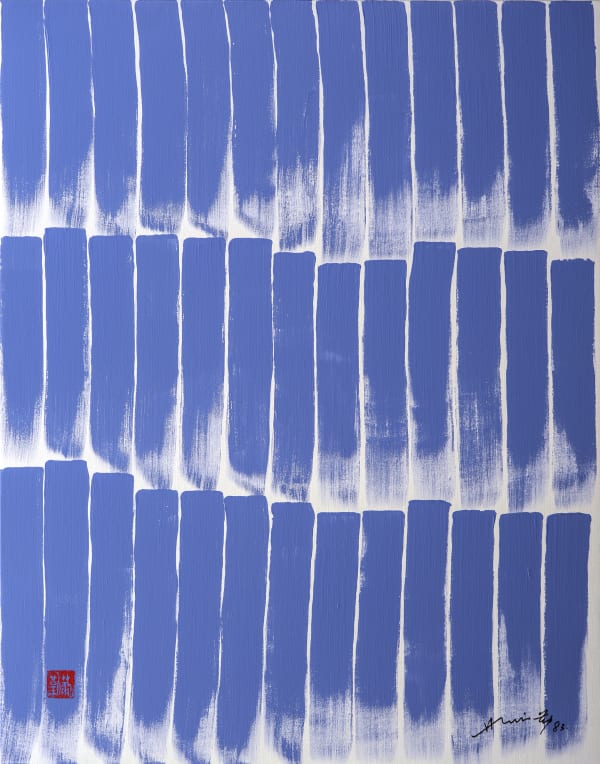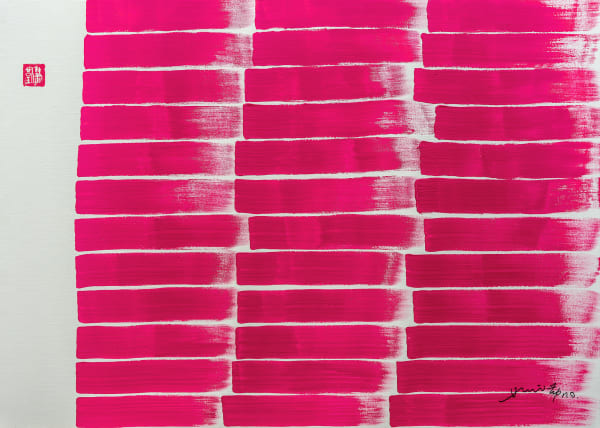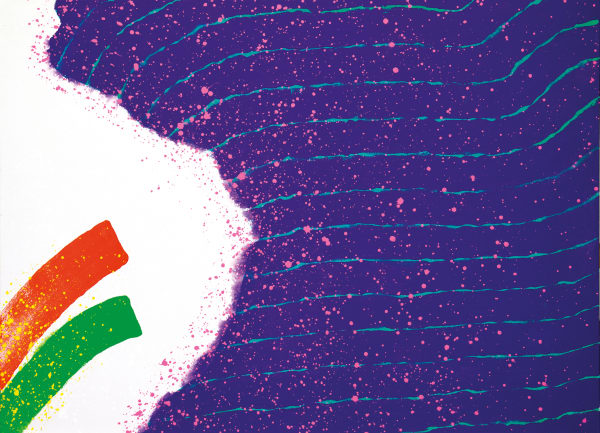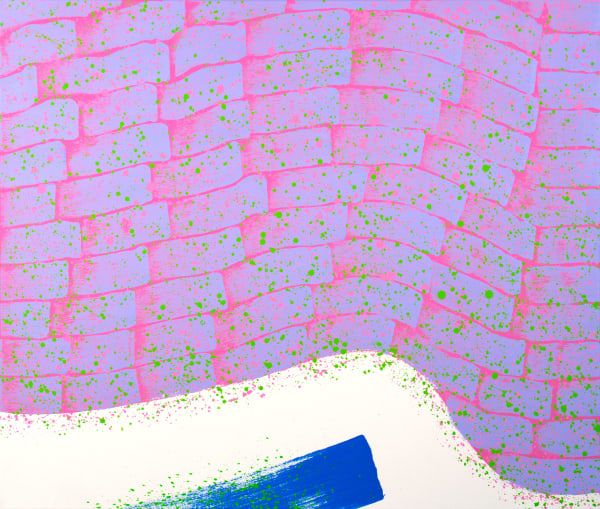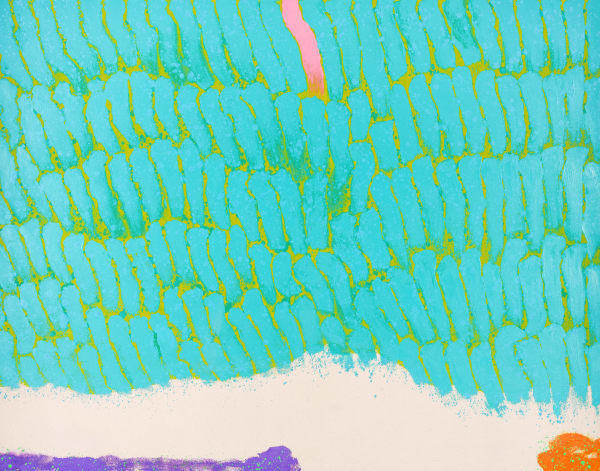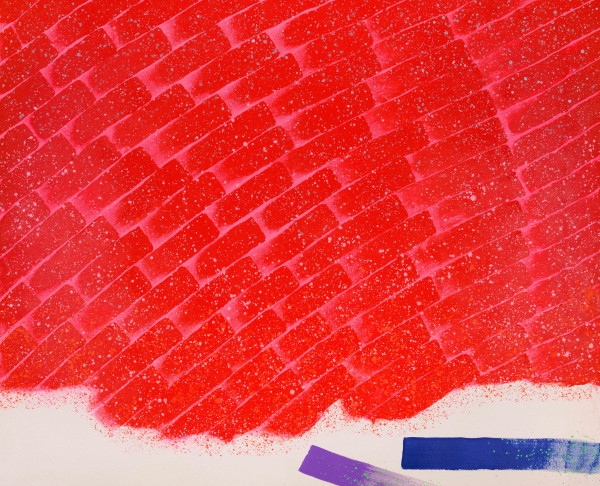蕭勤:從北京到巴黎: Works Exhibited in Major Museums
Travel and passage from one state to the next are the motif of this 3812 exhibition - as they are of Hsiao Chin's whole art and life.
(i)
If one experience has shaped Hsiao Chin's life and art, it is the journey, both literal and metaphorical. It is not simply that across his 86 years Hsiao Chin has moved from country to country, from continent to continent. Equally his art has 'journeyed' between Asian and European loyalties, drawing on both western and Chinese art traditions, often within the same individual painting. Even over the last few years when age and most obviously, the restrictions accompanying Covid have obliged him to stay at home, his art has continued to travel - in major one person museum exhibitions
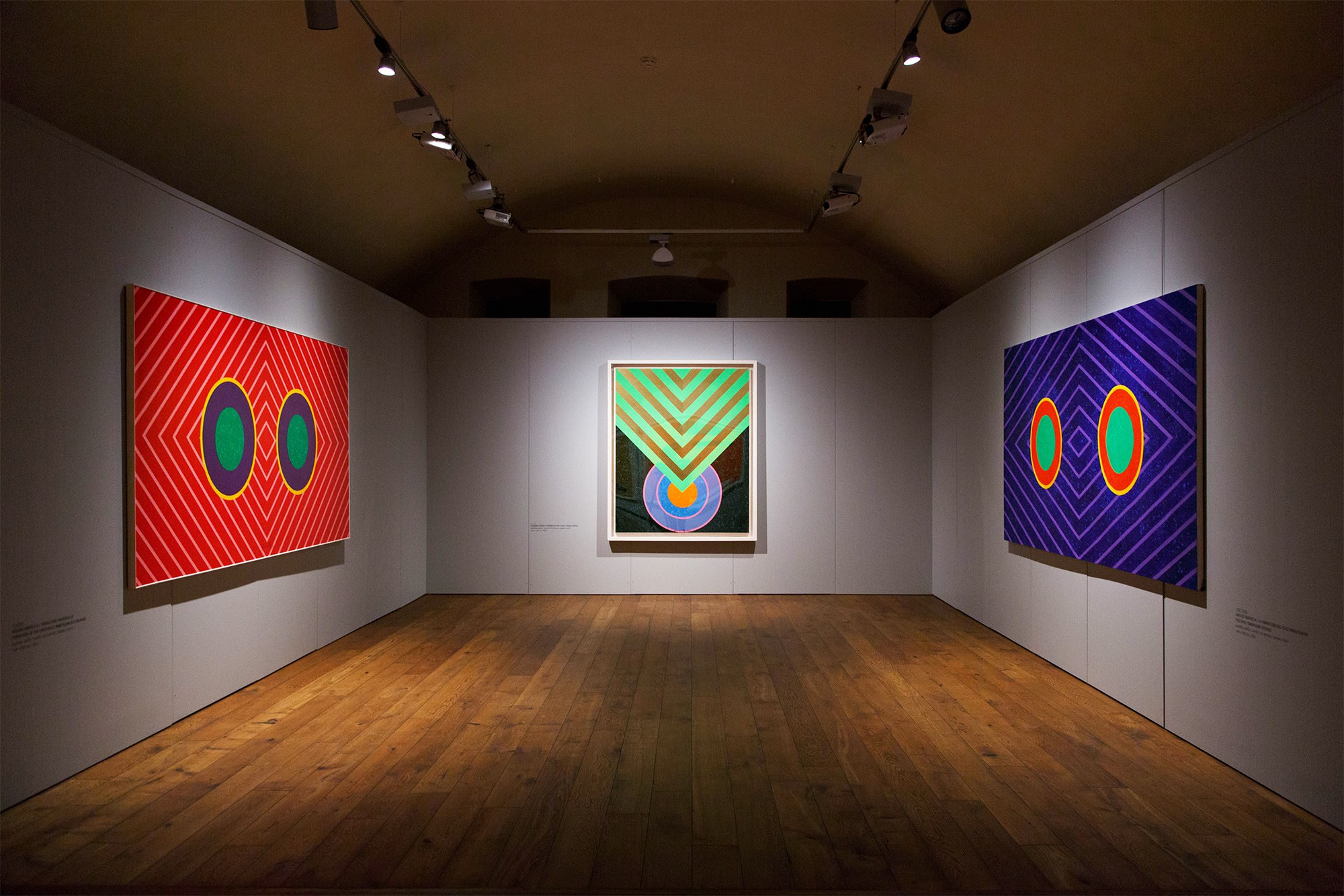
In my beginning is my end: the art of Hsiao Chin, Daugavpils Mark Rothko Art Centre, 2020
It is a sign of Hsiao Chin's aesthetic mobility that these museums have radically different trajectories - and that the work of the artist happily migrates to, and is as much at home in, one as another. The work travelled in 2019 to the Musee Guimet whose Chinese art collection ends in the eighteenth century; to the Mark Rothko Art Centre in 2020 where Hsiao Chin's work was shown next to the room dedicated to six of Rothko's own work; and most recently, this year, to the Song Museum whose own collection includes both Picasso and Chinese traditional art.
Hsiao Chin's Song Museum show was entitled ‘The Artist as Astronaut’ - which explicitly acknowledges Hsiao Chin's fascination with journeys and exploration. It is not simply that he applied to NASA to become the first artist-astronaut but that his 60s work uses the iconography and grammar of contemporary space travel to make interior landscapes through which the artist (and viewer) travels.

Hsiao Chin, Il riservo dell'inverno/Canto diquattro stagione (1,2,3), Acrylic on canvas, Each: 88 x 135cm, Total: 88 x 405cm (in 3), 2008
The Artist as Astronaut: Hsiao Chin, Song Art Museum Beijing, 2021
(ii)
It is in this larger context that the work on show in this exhibition needs to be seen and understood - the work made in the wake of the tragic death of his daughter. The Passage paintings of the 90s with titles such as ‘Transcending the Eternal Garden’ continue the artist's fascination with the journey. But the paintings now have a religious inflection – just look at ‘Transcending the Garden 1’. The view is from above, onto the landscape below (unlike the 60s paintings when the viewer was travelling upwards into towards space). There is also the reference to the Garden which conjures up in the history of Chinese painting a secluded place; or in the language of western culture both the Garden of Eden and the Agony in the Garden (it is worth remembering that Hsiao Chin’s grandfather was a Protestant priest). In art terms of course a reference may be to the late great garden paintings of Monet, developed to keep the tragedy of World War One at bay.

Hsiao Chin and his daughter Samantha
Of course, there is no literal garden, Chinese or western, in Hsiao Chin's painting. Nor is there that elegiac quality to be found in another important abstract painter Robert Motherwell whose more than 100 paintings around Elegy for the Spanish Republic turned to black and white to memorialise loss and tragedy.
Like Motherwell, Hsiao Chin's memorial takes an abstract form - but in red not black. How are we to respond to the red, in terms of the language of the west or its meaning within Chinese culture? How are we to make sense of the colours’ deliquescence as they break apart?
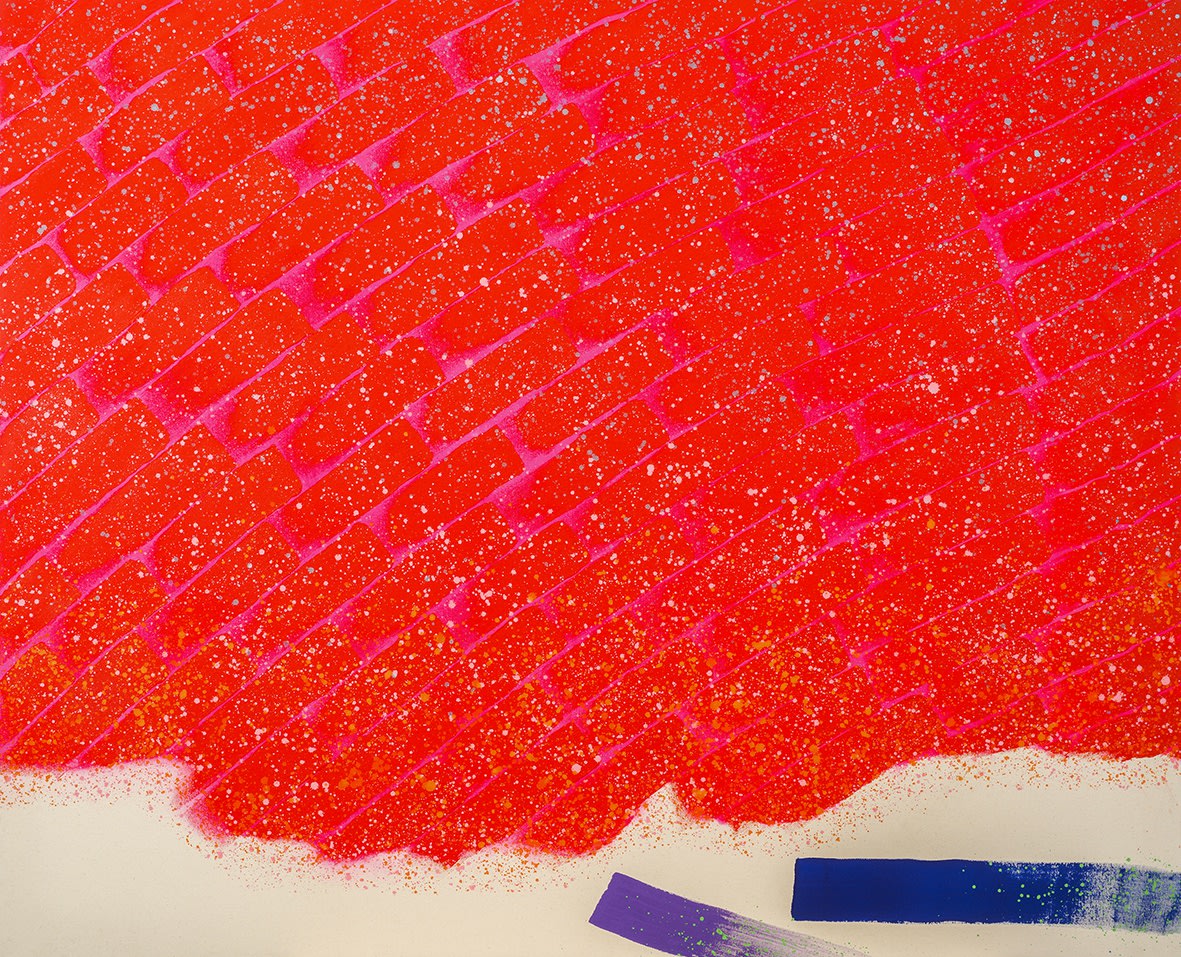
Hsiao Chin, Samadhi-39, Acrylic on canvas, 130 x 160cm, 2000
However we understand these paintings, we are taken on a scroll-like journey across the flat surface, but most importantly are given access to a complex hymn to the balm that travel and passage can give a wounded soul. These are paintings which, in the words of the poet TS Eliot, himself shaped by Buddhist thought, ‘shall not cease from exploration/And the end of all our exploring/Will be to arrive where we started/And know the place for the first time’.

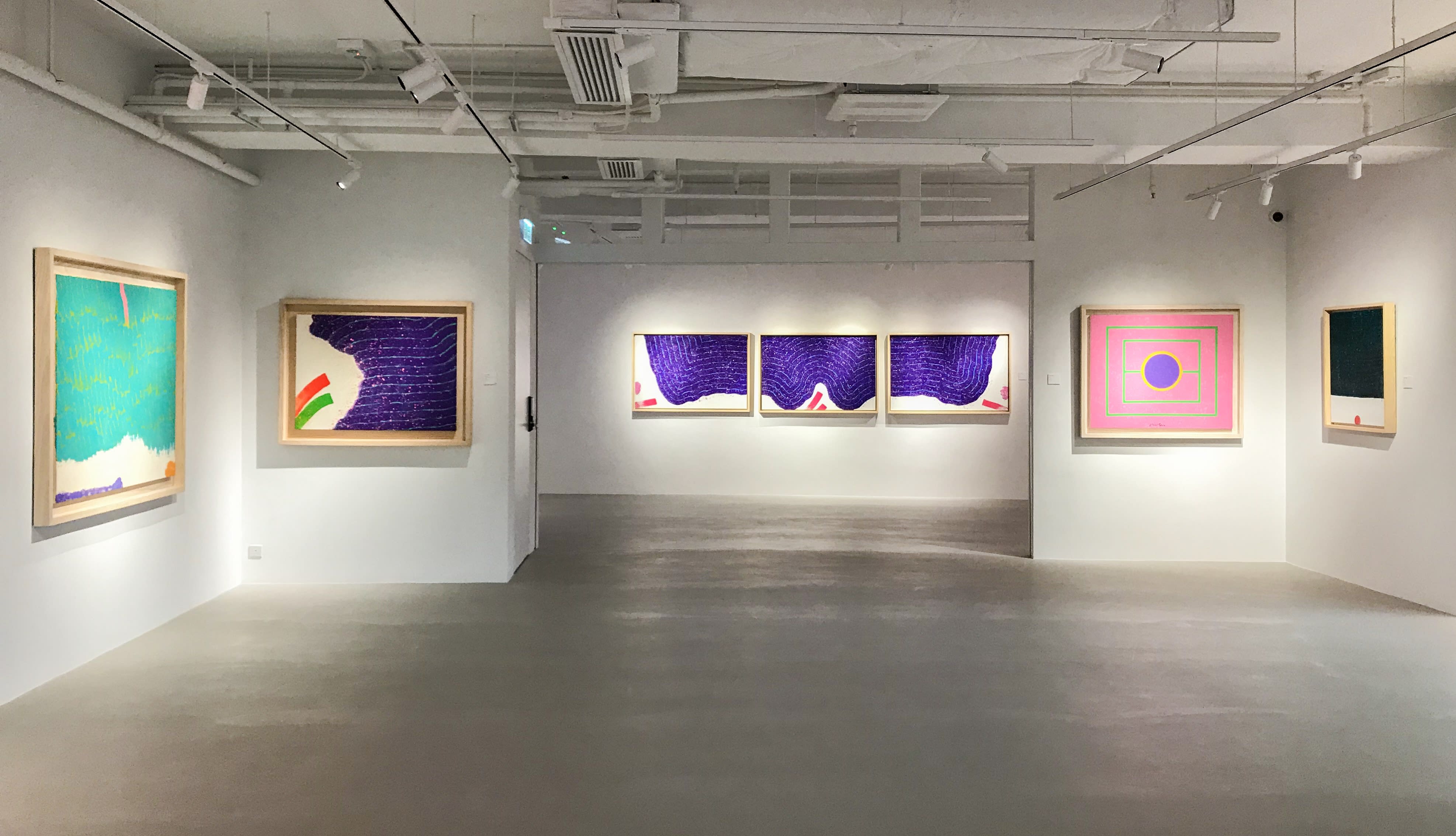
Hsiao Chin, From Beijing to Paris allows you to dive into the master painter’s otherworldly works, which have been widely exhibited in major museums from the Song Art Museum in Beijing, through the Mark Rothko Art Centre in Latvia to the Musée Guimet in Paris. Hope you will enjoy this amazing and insightful show.
The exhibition starts on 3 September, and runs to 28 September, 2021.
-
 Hsiao Chin 蕭勤, Il silenzio《靜》, 1962
Hsiao Chin 蕭勤, Il silenzio《靜》, 1962 -
 Hsiao Chin 蕭勤, La Forza《勁》, 1962
Hsiao Chin 蕭勤, La Forza《勁》, 1962 -
 Hsiao Chin 蕭勤, Movement-2《動態-2》, 1963
Hsiao Chin 蕭勤, Movement-2《動態-2》, 1963 -
 Hsiao Chin 蕭勤, Parallelism of Tao (Parallelismo Del Tao)《道之平行》, 1963
Hsiao Chin 蕭勤, Parallelism of Tao (Parallelismo Del Tao)《道之平行》, 1963 -
 Hsiao Chin 蕭勤, Il predestino《注定》, 1963
Hsiao Chin 蕭勤, Il predestino《注定》, 1963 -
 Hsiao Chin 蕭勤, Sun-5《太陽-5》, 1964-2010
Hsiao Chin 蕭勤, Sun-5《太陽-5》, 1964-2010 -
 Hsiao Chin 蕭勤, The Sun-7《太陽-7》, 1964
Hsiao Chin 蕭勤, The Sun-7《太陽-7》, 1964 -
 Hsiao Chin 蕭勤, Submerged《潛沉》, 1964
Hsiao Chin 蕭勤, Submerged《潛沉》, 1964 -
 Hsiao Chin 蕭勤, Chi-297《炁-297》, 1983
Hsiao Chin 蕭勤, Chi-297《炁-297》, 1983 -
 Hsiao Chin 蕭勤, Chi-315《炁-315》, 1984
Hsiao Chin 蕭勤, Chi-315《炁-315》, 1984 -
 Hsiao Chin 蕭勤, Meditazione del superamento del grande soglia《超越大限之冥想》, 1996
Hsiao Chin 蕭勤, Meditazione del superamento del grande soglia《超越大限之冥想》, 1996 -
 Hsiao Chin 蕭勤, Energies between Two Dimensions《二界間的能》, 1997
Hsiao Chin 蕭勤, Energies between Two Dimensions《二界間的能》, 1997 -
 Hsiao Chin 蕭勤, A Serene Journey《文靜之旅》, 1998
Hsiao Chin 蕭勤, A Serene Journey《文靜之旅》, 1998 -
 Hsiao Chin 蕭勤, Concerto-5《協奏-5》, 1999
Hsiao Chin 蕭勤, Concerto-5《協奏-5》, 1999 -
 Hsiao Chin 蕭勤, The Bright Side-2《光明彼岸-2》, 1999
Hsiao Chin 蕭勤, The Bright Side-2《光明彼岸-2》, 1999 -
 Hsiao Chin 蕭勤, Samantha nel Giardino Eterno-2《在永久花園的莎芒妲-2》, 1999
Hsiao Chin 蕭勤, Samantha nel Giardino Eterno-2《在永久花園的莎芒妲-2》, 1999 -
 Hsiao Chin 蕭勤, La forza di Vita-1《生命力-1》, 1999
Hsiao Chin 蕭勤, La forza di Vita-1《生命力-1》, 1999 -
 Hsiao Chin 蕭勤, La forza di Vita-2《生命力-2》, 1999
Hsiao Chin 蕭勤, La forza di Vita-2《生命力-2》, 1999 -
 Hsiao Chin 蕭勤, Samantha nel giardino eterno-1《在永久花園的莎芒妲-1》, 1999
Hsiao Chin 蕭勤, Samantha nel giardino eterno-1《在永久花園的莎芒妲-1》, 1999 -
 Hsiao Chin 蕭勤, Concerto-7《協奏-7》, 1999
Hsiao Chin 蕭勤, Concerto-7《協奏-7》, 1999 -
 Hsiao Chin 蕭勤, Samadhi-39《心靈之體現-39》, 2000
Hsiao Chin 蕭勤, Samadhi-39《心靈之體現-39》, 2000 -
 Hsiao Chin 蕭勤, Transcending Beyond the Great Threshold-10《超越大限外-10》, 2000
Hsiao Chin 蕭勤, Transcending Beyond the Great Threshold-10《超越大限外-10》, 2000 -
 Hsiao Chin 蕭勤, Il riservo dell'inverno/Canto diquattro stagione (1,2,3)《冬藏之一、二、三-四季禮讚》, 2008
Hsiao Chin 蕭勤, Il riservo dell'inverno/Canto diquattro stagione (1,2,3)《冬藏之一、二、三-四季禮讚》, 2008 -
 Hsiao Chin 蕭勤, Chi's Elegant《炁之逸》, 2015
Hsiao Chin 蕭勤, Chi's Elegant《炁之逸》, 2015 -
 Hsiao Chin 蕭勤, Light of Divinity-16《神光-16》, 2017
Hsiao Chin 蕭勤, Light of Divinity-16《神光-16》, 2017
